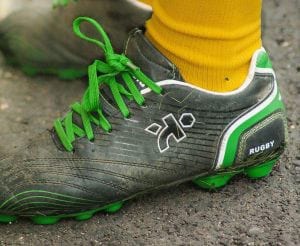Rubinstein-Taybi Syndrome (RTS)
What is Rubinstein-Taybi syndrome (RTS)?
Rubinstein-Taybi syndrome (RTS) is a rare genetic disorder that affects many organ systems. Specifically, RTS is characterized by growth delays, distinctive facial features, and intellectual disability, but there are many more complications with the disease.What causes Rubinstein-Taybi syndrome (RTS)?
RTS may be caused by a mutation in the CREBBP or EP300 gene, or as the result of a very small deletion (microdeletion) of genetic material from the short (p) arm of chromosome 16. However, in some people with RTS, the cause is unknown. Researchers believe that these cases are due to mutations in other genes that have not yet been identified.What are the symptoms of Rubinstein-Taybi syndrome (RTS)?
The following are common signs and symptoms of RTS in affected individuals:- Distinctive facial features, including:
- Downward slanted eyes (downslanted palpebral fissures)
- Long eyelashes
- High-arched eyebrows
- Low-hanging nasal septum (columella)
- High palate
- Grimacing smile
- Extra cusp on the lingual side of a front tooth
- Distinctively broad and/or angled fingers and toes
- Developmental, growth, and speech delays
- Intellectual disability
- Breathing and feeding difficulties (dysphagia)
- Urogenital abnormalities
How is Rubinstein-Taybi syndrome (RTS) diagnosed?
RTS is diagnosed based on an observation of the distinctive physical features/symptoms of the condition. The diagnosis may be further supported through x-ray studies revealing malformations of the bones of the hands and feet, which are characteristic to RTS. Genetic testing (FISH or sequence analysis) may confirm RTS in a patient by revealing pathogenic variants in the CREBBP gene (identified in 50%-60% of affected individuals) or in the EP300 gene (identified in 3%-8% of affected individuals).What are the treatments for Rubinstein-Taybi syndrome (RTS)?
Since there is no cure for RTS, the management of RTS is directed toward the specific symptoms of each individual. Orthopedic surgery, physical therapy, and/or other supportive techniques may help treat certain skeletal abnormalities that are potentially associated with RTS, such as scoliosis. In some cases, surgery may be performed on the hands and/or feet, particularly when there are extra (supernumerary) fingers and/or toes, or when the fingers are severely misaligned.Where can I find out more about Rubinstein-Taybi syndrome (RTS)?
Rubinstein-Taybi Syndrome (RTS) Articles

Family Searches for Donated Breast Milk for Son with Rubinstein-Taybi Syndrome (RTS)
Jessica Lynn
February 24, 2023
Read More »




